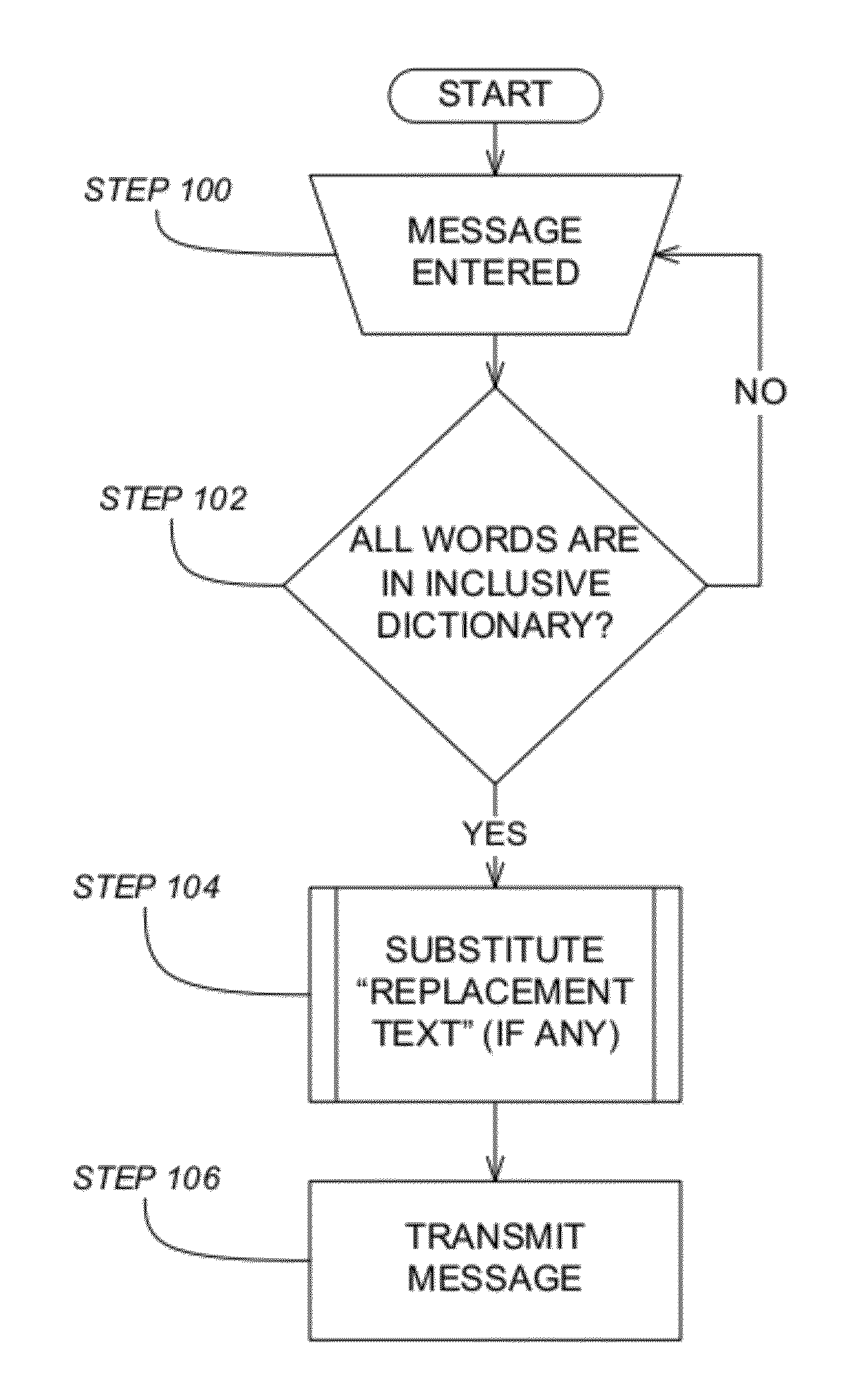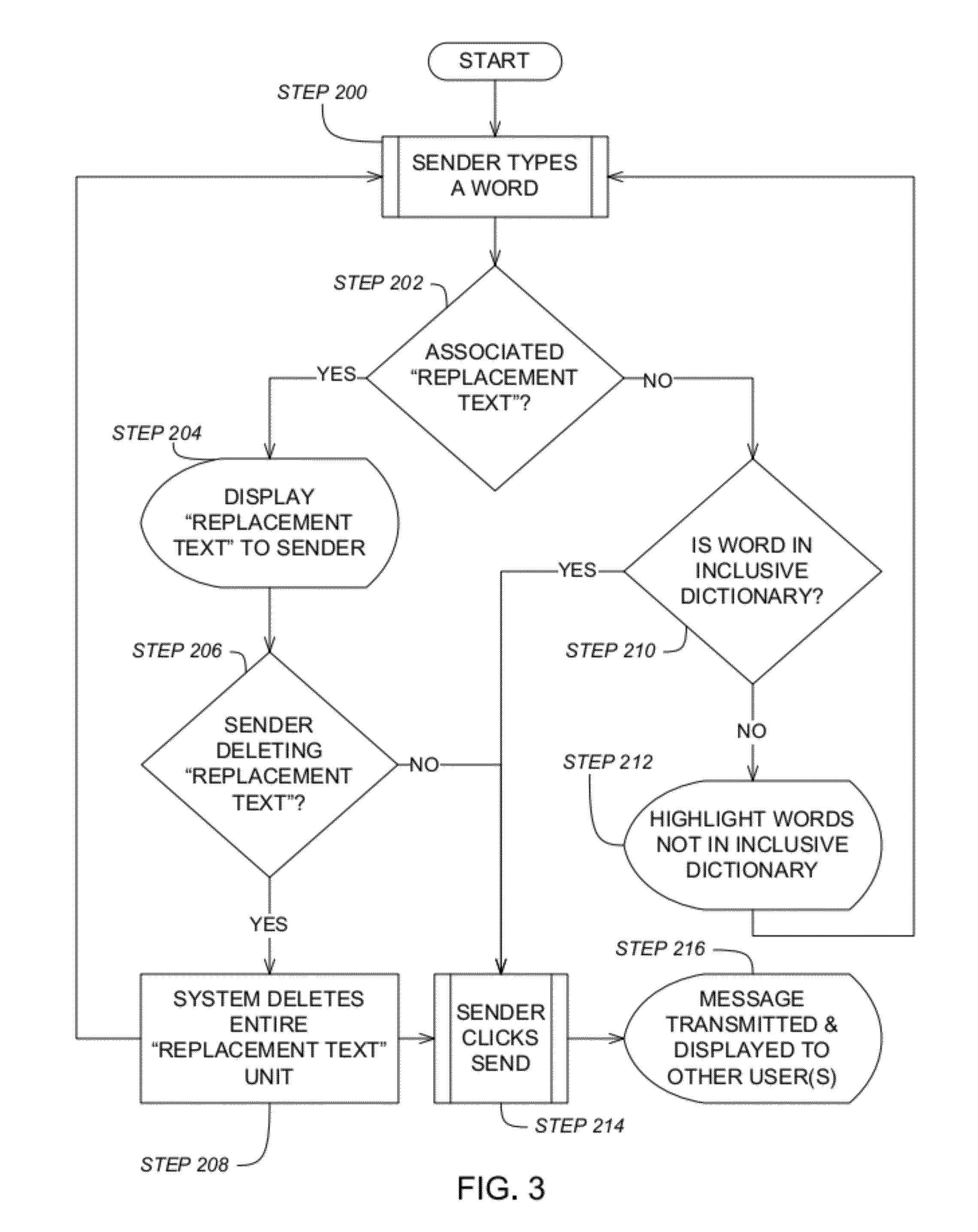Message filter with replacement text
a message filter and text technology, applied in the field of computer network-based messaging systems, can solve the problems of easy outwitting, uneconomical for most internet businesses, and difficulty in maintaining standards of conduct by chat site administrators,
- Summary
- Abstract
- Description
- Claims
- Application Information
AI Technical Summary
Benefits of technology
Problems solved by technology
Method used
Image
Examples
Embodiment Construction
[0014]As described above, a limitation of any chat filter that employs an inclusive dictionary (also referred to as a “white list”) is that users are limited to using words included in the inclusive dictionary, which can considerably impede effective communication between users. As described above, users often develop workarounds that circumvent such a filter by combining several permitted words to create offensive or otherwise inappropriate messages. As described in U.S. Patent Application Publication No. 2009 / 0228557 to Ganz et al. (hereinafter “Ganz '557”), which is hereby incorporated by reference in its entirety, an inclusive dictionary can optionally be used together with an exclusive dictionary (also referred to as a “black list”) to provide a multiple layer or hybrid chat filter. In such a hybrid system, the size of the inclusive dictionary can be expanded to include more words and provide additional flexibility, since offensive phrases composed of several permitted words ca...
PUM
 Login to View More
Login to View More Abstract
Description
Claims
Application Information
 Login to View More
Login to View More - R&D
- Intellectual Property
- Life Sciences
- Materials
- Tech Scout
- Unparalleled Data Quality
- Higher Quality Content
- 60% Fewer Hallucinations
Browse by: Latest US Patents, China's latest patents, Technical Efficacy Thesaurus, Application Domain, Technology Topic, Popular Technical Reports.
© 2025 PatSnap. All rights reserved.Legal|Privacy policy|Modern Slavery Act Transparency Statement|Sitemap|About US| Contact US: help@patsnap.com



